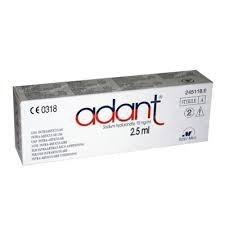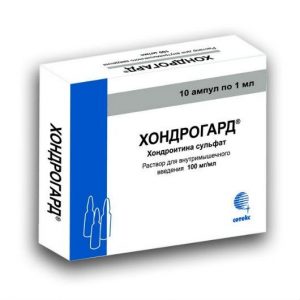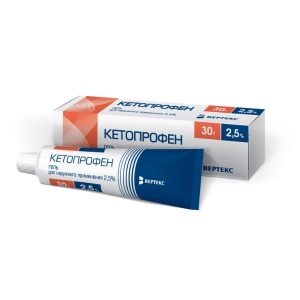Description
Description
Round biconvex tablets, coated with an enteric-coated orange, at a fracture from white to almost white.
Release form
Coated tablets.
Packaging
20 pcs.
Pharmacological action
Diclofenac is a non-steroidal anti-inflammatory drug (NSAID). It has anti-inflammatory, analgesic and antipyretic effects. It inhibits the COX enzyme in the cascade of arachidonic acid metabolism and disrupts the biosynthesis of prostaglandins.
When used externally, it has anti-inflammatory and analgesic effects. Reduces and relieves pain at the site of ointment application (including joint pain at rest and during movement), reduces morning stiffness and swelling of joints. Helps increase range of motion.
Indications
Symptomatic treatment of diseases of the musculoskeletal system (rheumatoid arthritis, psoriatic arthritis, juvenile chronic arthritis, ankylosing spondylitis (ankylosing spondylitis) gouty arthritis, rheumatic soft tissue rheumatoid arthritis, peripheral osteoarthritis and pulmonary arthritis bursitis). The drug relieves or reduces pain and inflammation during the treatment period, while not affecting the progression of the disease. Mild to moderate pain: neuralgia, myalgia, lumbar ischialgia, post-traumatic pain syndrome, accompanied by inflammation, postoperative pain, headache, migraine, algomenorrhea, adnexitis, proctitis, toothache. As part of the complex treatment of infectious and inflammatory diseases of the ear, throat, nose with severe pain (pharyngitis, tonsillitis, otitis media).
Contraindications
Hypersensitivity to the active substance (including other NSAIDs) or auxiliary components
Complete or incomplete combination of bronchial asthma, recurrent nasal polyposis and paranasal sinuses and intolerance to acetylsalicylic acid or other. history)
Erosive-ulcerative changes in the mucous membrane of the stomach or duodenum, active gastrointestinal bleeding
Inflammatory bowel disease (ulcerative colitis, disease Crohn) in the acute phase
The period after coronary artery bypass grafting
III trimester of pregnancy, breastfeeding period
Confirmed chronic heart failure (NYHA class II-IV functional class)
Coronary heart disease
Peripheral artery disease or cerebrovascular disorder
Hematopoiesis, hemostasis (including hemophilia) active or severe liver disease liver
Severe renal failure (creatinine clearance less than 30 ml / min) progressive kidney disease
Confirmed hyperkalemia
Intolerance lactose, lactase deficiency, glucose-galactose malabsorption (the drug contains lactose).
Children under 15 years old.
Precautions:
Anemia, bronchial asthma, confirmed chronic heart failure, functional class I NYHA classification, arterial hypertension, edema syndrome, liver or kidney failure (creatinine clearance 30-60 ml / min), dyslipidemia, hyperlipoproteinemia, diabetes mellitus, smoking, inflammatory bowel disease, the condition after extensive surgery, induced porphyria, diverticulitis, systemic diseases of the connective tissue, pregnancy I-II trimester.
Anamnestic data on the development of peptic ulcer of the gastrointestinal tract, the presence of Helicobacter pylori infection, old age, prolonged use of NSAIDs, frequent drinking, severe somatic diseases.
Concomitant therapy with anticoagulants (e.g. warfarin), antiplatelet agents (e.g. acetylsalicylic acid, clopidogrel), oral glucocorticosteroids (e.g. prednisone), selective serotonin reuptake inhibitors (e.g. citalopram, fluoxetine, paroxetine, sertraline).
In patients with seasonal allergic rhinitis, swelling of the mucous membrane of the nasal cavity (including nasal polyps), chronic obstructive pulmonary disease, chronic respiratory infections (especially associated with allergic rhinitis-like symptoms), with allergies to other drugs, in patients with a significant decrease in circulating blood volume, diclofenac should be used with caution.
Pregnancy and lactation
Insufficient data on the safety of diclofenac in pregnant women. Therefore, diclofenac should be prescribed in the first and second trimesters of pregnancy only in cases where the expected benefit to the mother outweighs the potential risk to the fetus. Diclofenac, like other inhibitors of prostaglandin synthesis, is contraindicated in the last 3 months of pregnancy (suppression of uterine contractility and premature closure of the ductus arteriosus in the fetus is possible).
Diclofenac passes into breast milk in small amounts. To prevent unwanted effects on the child, the drug should not be prescribed to lactating women. If it is necessary to use the drug, breastfeeding should be discontinued.
Composition
One enteric-coated tablet contains:
active ingredient: diclofenac sodium 50.0000 mg
excipients: lactose monohydrate – 46.6000 mg, corn starch – 59.2000 mg, povidone-1030 K-1000 K mg, sodium lauryl sulfate – 10.0000 mg, sodium carboxymethyl starch – 20.0000 mg, colloidal silicon dioxide – 3.0000 mg, magnesium stearate – 1.2000 mg shell: methacrylic acid and ethyl acrylate copolymer – 4.1379 mg, macrogol 6000 – 1.0345 mg, talc – 6.7241 mg, titanium dioxide E 171 CI 77891 – 1.0345 mg, dye sunny sunset yellow the second [E110] – 2.0670 mg.
Dosage and Administration
In all patients receiving diclofenac, it should be used in the minimum effective dose for the shortest time required to reduce the severity of symptoms. Inside, without chewing, during or after a meal, drinking plenty of water. Adults and adolescents from 15 years old – 50 mg 2-3 times a day. Upon reaching the optimal therapeutic effect, the dose is gradually reduced and transferred to maintenance treatment at a dose of 50 mg / day. The maximum daily dose is 150 mg.
Side effects
Side effects depend on the individual sensitivity, the size of the dose used and the duration of treatment.
From the digestive system: nausea, vomiting, epigastric pain, anorexia, flatulence, constipation, gastritis up to erosive with bleeding, increased transaminase activity, drug hepatitis, pancreatitis.
Urinary system: interstitial nephritis.
From the side of the central nervous system: headache, dizziness, disorientation, agitation, insomnia, irritability, fatigue, aseptic meningitis.
From the respiratory system: bronchospasm.
From the hemopoietic system: anemia, thrombocytopenia, leukopenia, agranulocytosis.
Dermatological reactions: exanthema, erythema, eczema, hyperemia, erythroderma, photosensitivity.
Allergic reactions: erythema multiforme, Lyell’s syndrome, Stevens-Johnson syndrome, anaphylactic reactions, including shock.
Local reactions: burning, formation of infiltrate, adipose tissue necrosis are possible at the injection site.
Other: fluid retention, edema, increased blood pressure.
For external use of
Skin rash, burning, and redness are possible at the site of application of the ointment. With prolonged external use of the drug, it is possible to develop systemic side effects from the digestive system, central nervous system, respiratory system, as well as allergic reactions.
Drug Interaction
Lithium Drugs, Digoxin: Diclofenac can increase lithium and digoxin concentrations in blood plasma. Monitoring of plasma lithium and digoxin concentrations when co-administered with diclofenac is recommended.
Methotrexate: caution should be exercised when administering diclofenac less than 24 h before or 24 h after methotrexate administration. in such cases, the concentration of methotrexate in the blood may increase and its toxic effect may increase.
Cyclosporine: the effect of diclofenac on the synthesis of prostaglandins in the kidneys may enhance the nephrotoxicity of cyclosporine. Therefore, the doses of diclofenac used should be lower than those of patients not using cyclosporine.
Diuretic and antihypertensive drugs: Diclofenac may reduce the antihypertensive effect of diuretic and antihypertensive drugs (eg, beta-blockers, angiotensin converting enzyme inhibitors – ACE). For patients, especially the elderly, these combinations should be administered with caution and regular monitoring of blood pressure. Patients should be adequately hydrated. After initiation and periodically during treatment, especially with the simultaneous administration of diuretic agents and ACE inhibitors, renal function should be monitored due to the increased risk of nephrotoxicity.
Drugs capable of causing hyperkalemia: concomitant use of diclofenac with potassium-sparing diuretics, cyclosporine, tacrolimus, or trimethoprim may lead to increased serum potassium concentration (in the case of such a combination of drugs)
Antibacterials – Quinolone Derivatives: There are separate reports of seizures in patients receiving quinolone derivatives and diclofenac at the same time.
Anticoagulants and antiplatelet agents: it is necessary to combine diclofenac with these groups with caution because of the risk of bleeding. Although clinical studies have not shown the effect of diclofenac on the action of anticoagulants, there are some reports of increased bleeding risk in patients taking this combination. Therefore, in the case of such a combination of medicines, regular and careful monitoring of patients is recommended. Acetylsalicylic acid lowers the concentration of diclofenac in the blood.
NSAIDs and corticosteroids: The concomitant systemic use of diclofenac and other systemic NSAIDs or corticosteroids may increase the incidence of side effects (particularly from the gastrointestinal tract).
Selective serotonin reuptake inhibitors (SSRIs): concomitant use of diclofenac and SSRIs increases the risk of gastrointestinal bleeding.
Hypoglycemic drugs: clinical studies have found that when combined with diclofenac, it does not affect the effectiveness of hypoglycemic drugs. However, there have been reports of development in both hypoglycemia and hyperglycemia, which required a change in the dose of hypoglycemic agents during diclofenac therapy. Therefore, it is recommended that blood glucose be monitored during the combined use of diclofenac and hypoglycemic agents.
Phenytoin: Phenytoin and diclofenac should be administered concomitantly with the control of phenytoin in the blood plasma due to the potential for increased systemic effects.
Tacrolimus: may increase nephrotoxicity when co-administered with diclofenac.
Cefamandol, cefoperazone, cefotetan, valproic acid and plicamycin increase the incidence of hypoprothrombinemia.
The effect of diclofenac on the synthesis of prostaglandins in the kidneys may enhance the toxic effect of gold preparations. Concomitant use with ethanol, colchicine, corticotropin, and pierced Hypericum drugs increases the risk of bleeding in the gastrointestinal tract.
Powerful CYP2C9 isoenzyme inhibitors: caution should be exercised when co-administering diclofenac and potent CYP2C9 isoenzyme inhibitors (such as voriconazole) due to possible increases in serum diclofenac concentrations and increased systemic action.
Overdose
Symptoms: vomiting, gastrointestinal bleeding, diarrhea, dizziness, tinnitus, convulsions, increased blood pressure, respiratory depression, with severe overdose – acute renal failure, hepatotoxicity.
Treatment: gastric lavage, activated charcoal, symptomatic therapy aimed at eliminating hypertension, impaired renal function, convulsions, gastrointestinal lesions, respiratory depression. Forced diuresis, hemodialysis are ineffective (due to significant protein binding and intense metabolism).
Storage conditions
Store in a dry, Keep away from light at a temperature not exceeding 25 ° C. Keep out of the reach of children.
Expiration
3 years. Do not use after the expiry date stated on the packaging.
Active ingredient
Diclofenac
pharmacy terms Prescription
dosage form
dosage form
tablets




